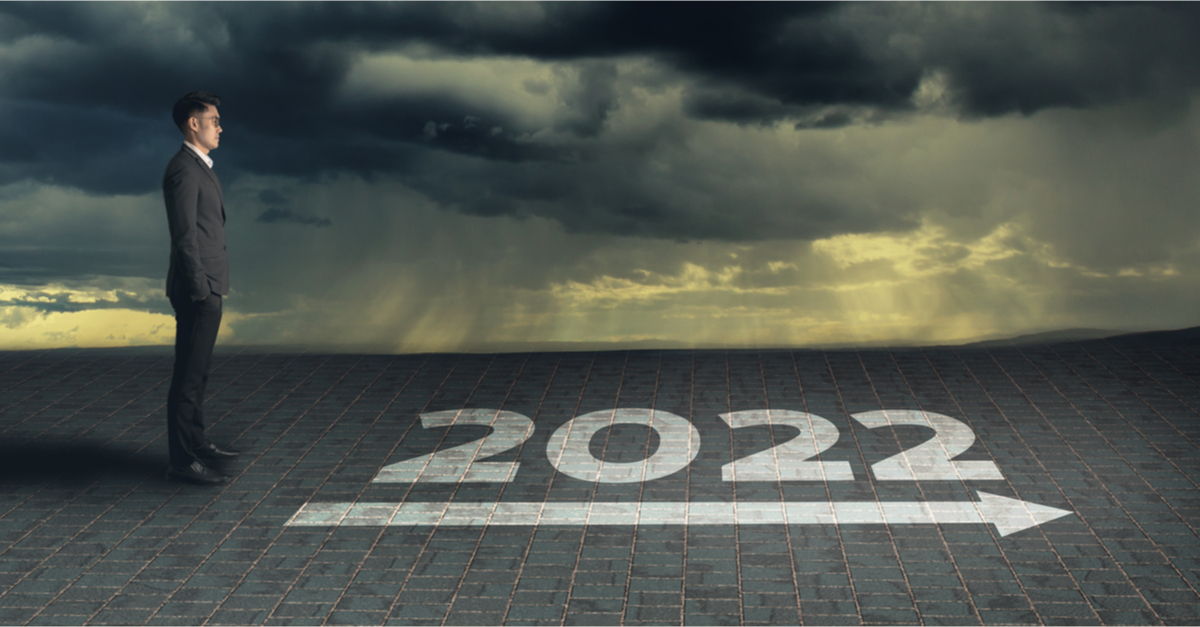
Great Internal Auditors Can “Read the Room” (even online)
September 7, 2021
“Risk in Focus” – New Report Focuses on Internal Audit Priorities in 2022 and Beyond
September 21, 2021For years I have been writing about the need for internal audit to modernize its approach to risk assessment. I authored a blog in 2018 calling on internal auditors to come down from hilltops where our ancestors stood to assess weather risks, and deploy technology and other means to assess future or emerging risks much like meteorologists do to forecast weather risks. In a more recent blog, I shared the results of a poll that indicates that internal auditors believe the #1 strategic risk facing the profession is that we will keep “missing emerging risks.” So, I thought it was timely to share my thoughts on this topic again.
As a profession, internal auditors have cultivated a long and respected legacy as purveyors of hindsight. Almost all of us are adept at looking at last year’s data and telling management where past mistakes were made. While hindsight is a necessary part of internal auditing, 20/20 hindsight is one of our least valuable skills. Often, our clients are already aware of past mistakes.
With the advent of operational auditing and, ultimately, the introduction of consulting/advice into our portfolio of services, we also became purveyors of insight. Insight is generally seen as more valuable than hindsight to our beleaguered stakeholders, but it too suffers from limitations in an era when risks emerge at warp speed. As we have seen throughout the COVID pandemic, today’s insight may well be tomorrow’s hindsight.
There will always be a need for hindsight and insight, but foresight is the ultimate source of value. Stakeholders seek to navigate the future more than revisit the past or dwell in the present. It is time for internal auditors to focus our telescopes ahead. We need to concentrate on the risks of tomorrow if we are to not only protect but enhance value for our organizations.
Yet, stakeholders are generally unimpressed with our acumen at detecting emerging risks. In a KPMG survey of CFOs and audit committee chairs several years ago, only 10 percent agreed that their internal audit function adequately identified and responded to emerging risks that threatened their companies. There is nothing to make me believe the results would be any different in 2021.
In recent years, I have turned often to weather analogies when addressing challenges and opportunities for the internal audit profession. In many ways, identifying future risks is like predicting the weather. When our grandparents were young, there was no such thing as weather radar. If they were curious or concerned about potential changes in weather, they simply peered out their windows or stood on a hill and scanned the horizon for potential storms. Of course, their weather predictions were often wrong. Climbing to the hilltop may have expanded their view, but weather patterns are far too complex to know if the clouds you see contain damaging winds, or if they are even coming your way.
That’s why modern meteorologists have turned to more advanced methods. They monitor approaching storms with Doppler radar. They use digital satellite images to record cloud patterns around the world, and they plug the data into supercomputers, applying advanced statistical equations and algorithms to create more accurate forecast models. Of course, we all know that even meteorologists sometimes get it wrong, but their degree of reliability has increased dramatically with the advent of new tools and technology.
As a profession, our journey in assessing risks has been similar to the weather analogy above. When I first started assessing risks as a basis for my annual audit plans in the late 1990s, I was content to assess risks for the coming year. It was an adequate methodology for the organization I served when risk assessment itself was not yet even an audit standard. Now 20 years later, I find many internal auditors are still content to assess risks for the year ahead. To paraphrase the late musician Prince, we are assessing risks “like it’s 1999.”
From hilltops to desktops, we all need to get smarter about risks, and there’s a lot we can learn from meteorologists. They don’t just observe the weather and make guesses about what the future might hold. They use every resource at their disposal to identify potential trouble spots and patterns before the storm materializes or inflicts significant damage.
Internal auditors and meteorologists have much in common. But our scope is much broader than predicting the weather. It encompasses virtually every type of risk, from the impact of changing market conditions or pandemics to financial and compliance issues. And that means our focus must extend far beyond the immediate future.
It would be great if there were technologies like Doppler radar to identify emerging risks. Someday, such tools might exist, but until then, we need to create our own virtual radar for detecting and monitoring emerging/approaching risks. That requires us to become more analytical in our approach.
There is no silver bullet for identifying emerging risks. Like all risk assessment, there is a degree of art in addition to science. However, if internal audit isn’t looking in the right direction, there is a greater likelihood of missing emerging risks. But just as storms in the Northern Hemisphere often emerge from the West, there are directions from which potential risks facing your company are likely to emerge. These include:
- Economic forecasts (macroeconomic as well as those facing your industry).
- Known strategic business risks facing your company.
- New corporate initiatives being planned.
- Legislative and regulatory outlook facing your industry.
- Geopolitical developments and political risks in regions where your company operates.
- Disruptive threats or opportunities facing your industry.
- Performance of your primary competitors.
- Risks emerging as headlines via traditional or social media.
Identifying emerging risks should be a collaborative process with management. After all, management is likely to have already identified many emerging risks that threaten the organization. We should position ourselves as a partner, not a competitor trying to one-up management, when it comes to emerging risk acumen. After fully vetting our inventory of emerging risks, we should be prepared to share our perspectives with the audit committee. Our conversation must include our own plans for monitoring and responding to these risks as the organization’s internal auditors. We have long been in an era in which crises have become commonplace, and after each new crisis, the same questions arise: “Why didn’t we see it coming?” “Where were the internal auditors?” The world’s best internal audit functions are well-prepared to answer these questions, and they do so in part by focusing on the future, by maintaining agility, and by proactively identifying and addressing emerging risks.
Hindsight is one of our least essential skills. It’s time to turn our telescopes in the other direction.




I welcome your comments via LinkedIn or Twitter (@rfchambers).